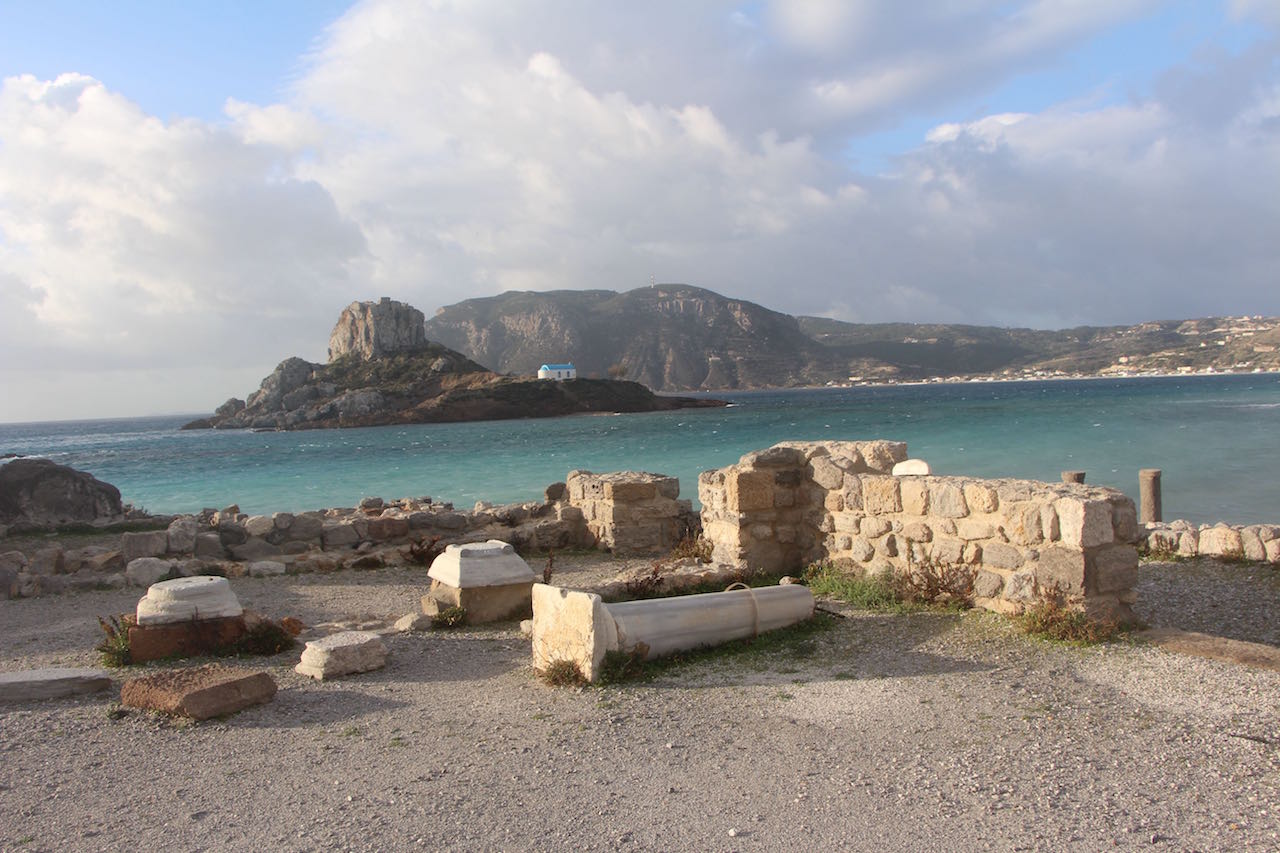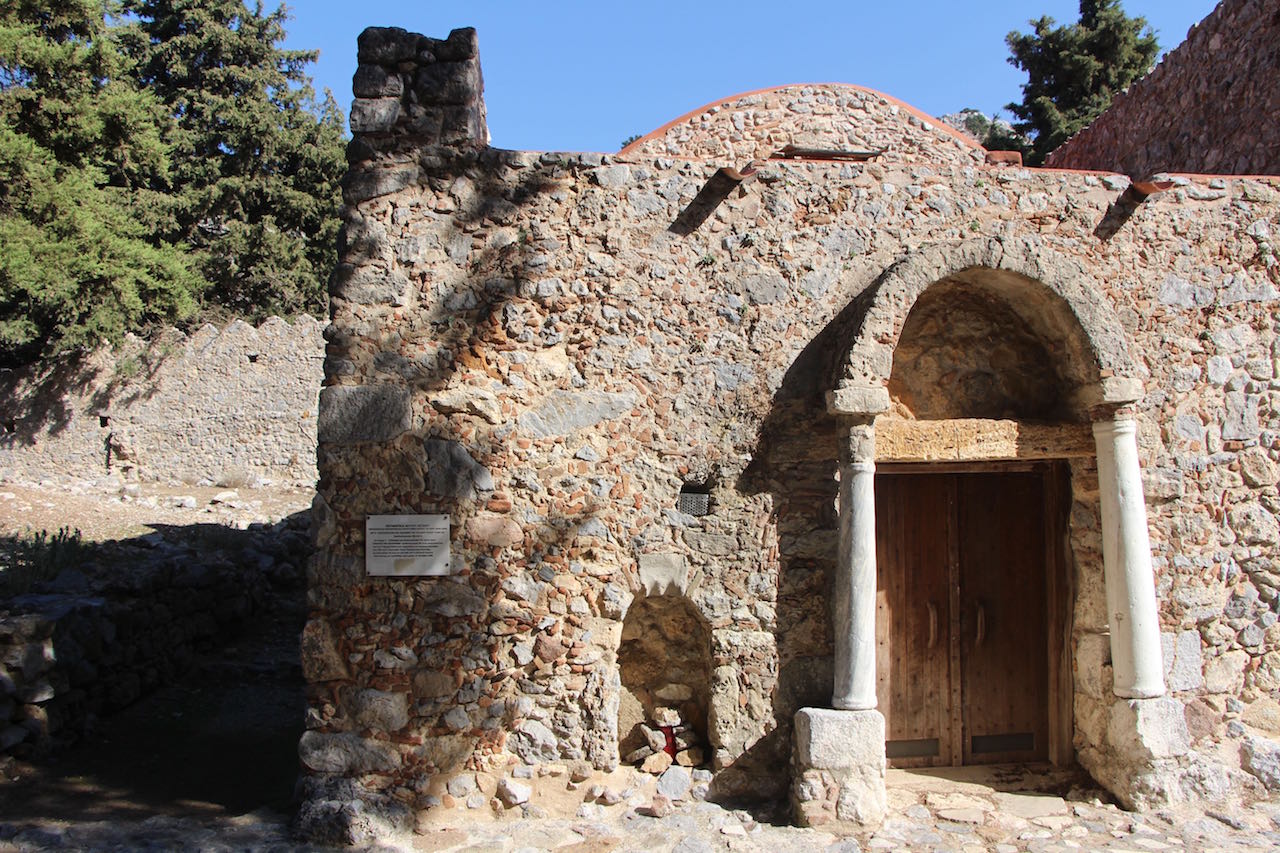
Of all the basilicas that were discovered during various excavations on the island, the two tripartite basilicas of Aghios (or Agios) Stefanos Basilica stand out as the grandest and best preserved of all. Τhey are estimated to have been built between 469 and 554 AD, dates of the two major destructive earthquakes that hit the island, the second being the cause of the destruction of the monument. They are built on a rock and kept in excellent condition, while the walls are built of local reddish limestone, situated opposite the island of Kastri right on the isthmus of Kefalos. The basilicas used to be accessed by sea or from the beach.
The large basilica, 22.85×15.50 m, that was discovered by Italian archaeologist Laurenzi in 1932, had a rectangular courtyard surrounded on its three sides by colonnades of granite pillars, that were restored by the Italian archaeologists. The aisles (sides) of the main church were also separated by colonnades, with pillars of white marble and Ionic capitals with figures. The Synthronon (benches/seats for the clergy) is discernible to the East, in the apse of the altar, made of successive semicircular marble seats. A marble barrier which constituted the iconostasis separated the altar from the main church. Rich mosaics with various geometric and other patters adorn this monument and notably the one in the narthex, representing a synthesis of circles and peacocks.
The smaller basilica, 16.90×11.90, situated to the North of the larger basilica, was discovered in 1935. It was a chapel of the cemetery that existed there and was thus characterised as a funerary basilica. The apse of the altar, the Synthronon and the foundations of the icon screen have been preserved.
A baptistry was also found on the NE corner of the whole complex.






























